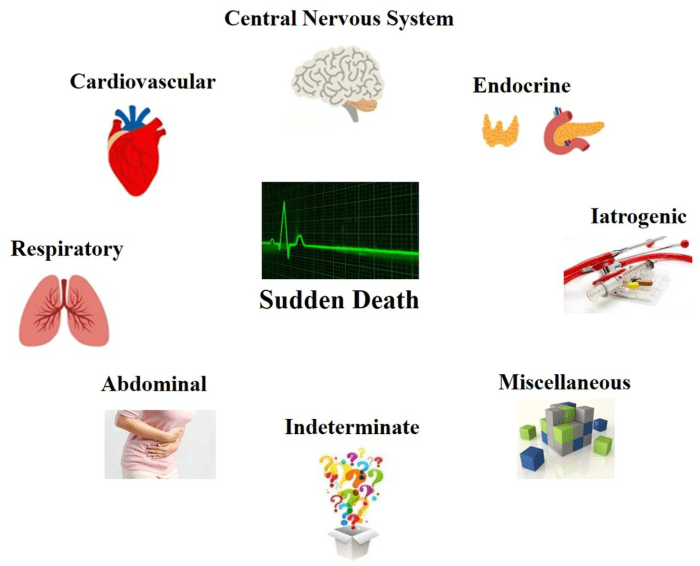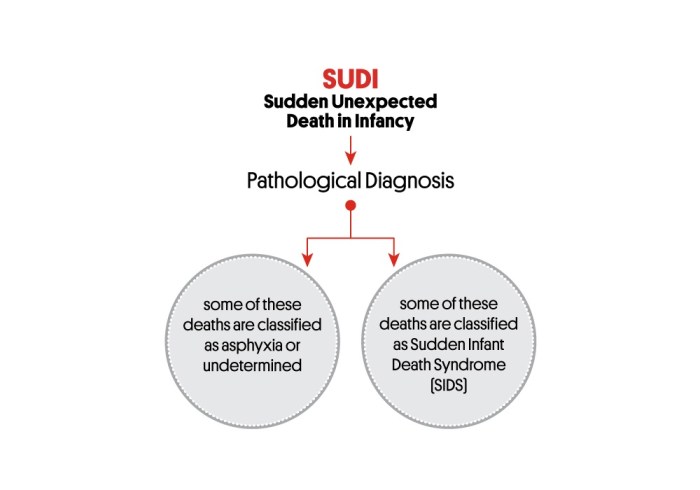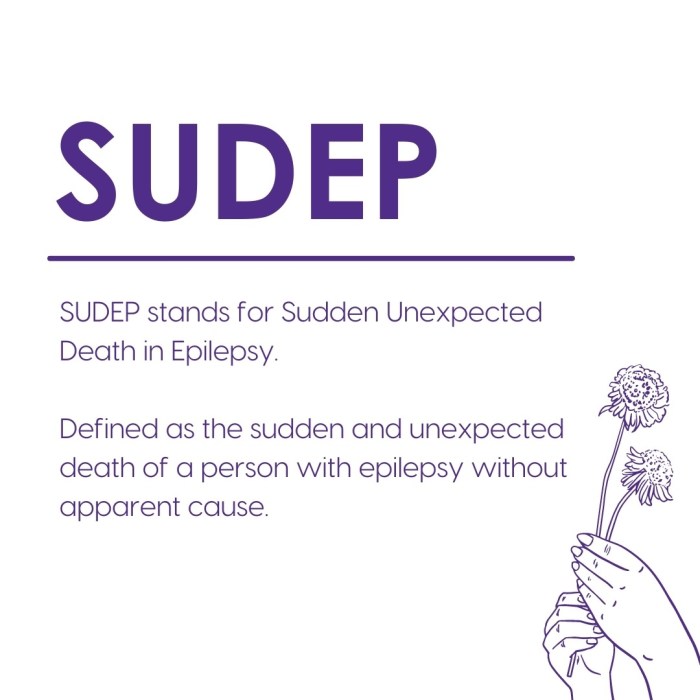SUD medical abbreviation, standing for Substance Use Disorder, unveils a multifaceted condition characterized by compulsive drug or alcohol use, often leading to severe impairments in various aspects of life. This comprehensive guide delves into the depths of SUD, exploring its types, causes, symptoms, diagnosis, treatment options, prevention strategies, and related concepts, shedding light on this prevalent issue.
As we embark on this journey, we’ll unravel the intricacies of SUD, empowering you with knowledge and understanding to navigate the complexities of this condition and its impact on individuals, families, and communities.
Definition of SUD Medical Abbreviation
SUD is a medical abbreviation that stands for Substance Use Disorder. It is a term used to describe a range of conditions characterized by the compulsive use of substances despite negative consequences. SUDs can involve the use of alcohol, drugs, or both.
Medical Definition of SUD
According to the Diagnostic and Statistical Manual of Mental Disorders, Fifth Edition (DSM-5), SUD is defined as a problematic pattern of substance use leading to clinically significant impairment or distress. The criteria for SUD include:
- Taking the substance in larger amounts or for longer periods than intended.
- Persistent desire or unsuccessful efforts to cut down or control substance use.
- Spending a great deal of time obtaining, using, or recovering from the effects of the substance.
- Cravings or a strong desire to use the substance.
- Continued use despite having persistent or recurrent social, occupational, or other important problems caused or exacerbated by substance use.
- Tolerance, as defined by either:
- A need for markedly increased amounts of the substance to achieve intoxication or desired effect.
- Markedly diminished effect with continued use of the same amount of the substance.
- Withdrawal, as manifested by either:
- The characteristic withdrawal syndrome for the substance.
- Use of the same (or a closely related) substance to relieve or avoid withdrawal symptoms.
Context of SUD Use
SUD is used in a variety of clinical and research settings. It is a diagnosis used by healthcare professionals to describe individuals who meet the criteria for a substance use disorder. SUD is also used in research studies to investigate the causes, consequences, and treatment of substance use disorders.
Types of SUD

Substance use disorders (SUDs) are characterized by compulsive drug or alcohol use despite negative consequences. Different types of SUDs exist, each with unique characteristics and patterns of use.
The Diagnostic and Statistical Manual of Mental Disorders, Fifth Edition (DSM-5) classifies SUDs into 10 specific categories based on the substance involved. These categories include:
Alcohol Use Disorder
- Characterized by excessive alcohol consumption leading to significant impairment or distress.
- Symptoms may include tolerance, withdrawal, cravings, and continued use despite negative consequences.
- Examples: Binge drinking, alcohol dependence, alcohol withdrawal.
Cannabis Use Disorder
- Involves problematic use of cannabis (marijuana), leading to significant impairment or distress.
- Symptoms may include tolerance, withdrawal, cravings, and continued use despite negative consequences.
- Examples: Cannabis dependence, cannabis withdrawal.
Opioid Use Disorder
- Characterized by compulsive use of opioids (e.g., heroin, fentanyl, prescription pain relievers) leading to significant impairment or distress.
- Symptoms may include tolerance, withdrawal, cravings, and continued use despite negative consequences.
- Examples: Heroin addiction, opioid dependence, opioid overdose.
Cocaine Use Disorder
- Involves problematic use of cocaine, leading to significant impairment or distress.
- Symptoms may include tolerance, withdrawal, cravings, and continued use despite negative consequences.
- Examples: Cocaine addiction, cocaine dependence, cocaine psychosis.
Stimulant Use Disorder
- Characterized by compulsive use of stimulants (e.g., amphetamine, methamphetamine) leading to significant impairment or distress.
- Symptoms may include tolerance, withdrawal, cravings, and continued use despite negative consequences.
- Examples: Methamphetamine addiction, amphetamine dependence.
Hallucinogen Use Disorder
- Involves problematic use of hallucinogens (e.g., LSD, psilocybin, DMT) leading to significant impairment or distress.
- Symptoms may include hallucinations, delusions, impaired judgment, and continued use despite negative consequences.
- Examples: LSD addiction, psilocybin dependence.
Sedative, Hypnotic, or Anxiolytic Use Disorder
- Characterized by compulsive use of sedatives, hypnotics, or anxiolytics (e.g., benzodiazepines, barbiturates) leading to significant impairment or distress.
- Symptoms may include tolerance, withdrawal, cravings, and continued use despite negative consequences.
- Examples: Benzodiazepine addiction, barbiturate dependence.
Polysubstance Use Disorder
- Involves problematic use of multiple substances (e.g., alcohol, opioids, cocaine) leading to significant impairment or distress.
- Symptoms may vary depending on the substances involved.
- Examples: Alcohol and opioid use disorder, cocaine and alcohol use disorder.
Other (or Unknown) Substance Use Disorder
- Used when the substance causing the SUD is not specified or is unknown.
- Symptoms may vary depending on the substance involved.
- Examples: Inhalant use disorder, synthetic cannabinoid use disorder.
Caffeine Use Disorder
- Characterized by excessive caffeine consumption leading to significant impairment or distress.
- Symptoms may include tolerance, withdrawal, cravings, and continued use despite negative consequences.
- Examples: Caffeine dependence, caffeine withdrawal.
Causes of SUD
Substance use disorders (SUDs) are complex conditions that can be caused by a variety of factors, including genetics, environmental influences, and personal experiences. While there is no single cause of SUD, research has shown that a combination of these factors can increase a person’s risk of developing a SUD.
Genetics
Genetics play a significant role in SUDs. Studies have shown that people who have a family history of SUDs are more likely to develop a SUD themselves. This is because genes can influence a person’s metabolism of drugs and alcohol, as well as their response to these substances.
However, it is important to note that genetics are not the only factor that determines whether or not a person will develop a SUD. Environmental factors and personal experiences also play a role.
Environmental Influences
Environmental influences can also contribute to the development of SUDs. These influences can include exposure to drugs and alcohol, as well as social and cultural factors. For example, people who live in areas with high rates of drug and alcohol use are more likely to develop a SUD.
Similarly, people who are exposed to drugs and alcohol at a young age are more likely to develop a SUD later in life.
Personal Experiences
Personal experiences can also play a role in the development of SUDs. These experiences can include trauma, stress, and mental health disorders. For example, people who have experienced trauma are more likely to develop a SUD as a way to cope with their emotions.
Similarly, people who have mental health disorders are more likely to develop a SUD as a way to self-medicate.
Symptoms of SUD
Substance use disorders (SUDs) can manifest in various ways, with symptoms ranging from physical to psychological and behavioral changes. The severity and nature of symptoms may vary depending on the substance being abused, the individual’s unique characteristics, and the stage of addiction.
Physical Symptoms
* Slurred speech
- Impaired coordination
- Tremors
- Changes in appetite and weight
- Nausea and vomiting
- Sleep disturbances
- Physical pain or discomfort
- Increased heart rate or blood pressure
- Respiratory problems
Psychological Symptoms
* Anxiety
- Depression
- Mood swings
- Irritability
- Paranoia
- Hallucinations
- Delusions
- Difficulty concentrating
- Memory problems
Behavioral Symptoms, Sud medical abbreviation
* Compulsive drug-seeking behavior
- Neglecting responsibilities
- Withdrawal from social activities
- Engaging in risky or dangerous activities
- Financial problems
- Legal issues
It’s important to note that not all individuals with SUDs will experience the same symptoms. Some may exhibit only a few, while others may have a combination of many. The presence of these symptoms can vary depending on the stage of addiction, with more severe symptoms typically occurring during periods of active substance use.
Diagnosis of SUD
The diagnosis of SUD is based on a comprehensive evaluation that includes a review of the individual’s history, physical examination, and laboratory tests. Healthcare professionals use the diagnostic criteria Artikeld in the Diagnostic and Statistical Manual of Mental Disorders (DSM-5) to assess the severity of SUD and determine the appropriate treatment plan.
Diagnostic Criteria for SUD
The DSM-5 diagnostic criteria for SUD include:
- A pattern of substance use that leads to clinically significant impairment or distress.
- The presence of at least two of the following symptoms within a 12-month period:
- Tolerance: Needing to use increasing amounts of the substance to achieve the desired effect.
- Withdrawal: Experiencing physical or psychological symptoms when the substance is stopped or reduced.
- Using the substance in larger amounts or for longer periods than intended.
- Spending a great deal of time obtaining, using, or recovering from the effects of the substance.
- Craving: A strong desire or urge to use the substance.
- Failure to fulfill major role obligations at work, school, or home due to substance use.
- Continued substance use despite persistent or recurrent social or interpersonal problems caused by the substance.
- Giving up or reducing important social, occupational, or recreational activities because of substance use.
- Recurrent substance use in situations where it is physically hazardous.
- Continued substance use despite knowledge of having a physical or psychological problem that is likely to be caused or exacerbated by the substance.
Treatment Options for SUD: Sud Medical Abbreviation
Addressing substance use disorders (SUDs) involves a comprehensive approach that encompasses various treatment options. These options aim to help individuals overcome their dependence on substances, improve their overall health, and rebuild their lives.
Evidence-based treatment approaches are central to effective SUD treatment. These approaches are grounded in scientific research and have been proven to yield positive outcomes. They focus on addressing the underlying causes of SUD, promoting healthy coping mechanisms, and preventing relapse.
Therapy
Therapy plays a crucial role in SUD treatment. It provides a safe and supportive environment for individuals to explore the underlying factors contributing to their substance use, develop healthier coping mechanisms, and learn relapse prevention strategies.
- Cognitive Behavioral Therapy (CBT):CBT helps individuals identify and change negative thought patterns and behaviors that contribute to their SUD.
- Motivational Enhancement Therapy (MET):MET aims to increase an individual’s motivation to change their substance use behavior.
- Contingency Management:This approach uses positive reinforcement to encourage abstinence and promote treatment adherence.
Medication
Medications can be an effective adjunct to therapy in SUD treatment. They can help reduce cravings, manage withdrawal symptoms, and treat co-occurring mental health conditions.
- Opioid Agonists (e.g., methadone, buprenorphine):These medications mimic the effects of opioids, reducing cravings and withdrawal symptoms.
- Opioid Antagonists (e.g., naltrexone):These medications block the effects of opioids, preventing the user from experiencing a high.
- Acamprosate:This medication helps reduce alcohol cravings.
Support Groups
Support groups provide a sense of community and shared experiences for individuals in recovery. They offer a safe and supportive environment where individuals can connect with others who understand their struggles, share their experiences, and offer encouragement.
- Alcoholics Anonymous (AA):A well-known 12-step support group for individuals recovering from alcohol use disorder.
- Narcotics Anonymous (NA):A 12-step support group for individuals recovering from drug use disorder.
- SMART Recovery:A non-12-step support group that focuses on self-empowerment and cognitive behavioral techniques.
Prevention of SUD
Preventing SUD involves a multifaceted approach that encompasses education, community engagement, and policy interventions.
Education and awareness campaigns play a crucial role in reducing the stigma associated with SUD and promoting understanding of the condition. By providing accurate information about the risks and consequences of substance use, individuals can make informed decisions and adopt healthier behaviors.
Community-Based Programs
Community-based programs offer a range of services to prevent and address SUD. These programs may include:
- Peer support groups that provide a safe and supportive environment for individuals to share their experiences and offer encouragement.
- School-based programs that educate youth about the risks of substance use and promote healthy decision-making.
- Early intervention services that identify and support individuals at risk of developing SUD.
- Community outreach programs that connect individuals with resources and services to address SUD and related issues.
Related Concepts to SUD

SUD is a complex condition with various related concepts and implications. Understanding these concepts can enhance our comprehension of SUD and its impact on individuals and society.
Medical Abbreviations Related to SUD
Several medical abbreviations are commonly used in the context of SUD. These include:
AUD
Alcohol Use Disorder
DUID
Driving Under the Influence of Drugs
OD
Overdose
SUD
Substance Use Disorder
TUD
Tobacco Use DisorderThese abbreviations help healthcare professionals communicate effectively about SUD and its related conditions.
Connection Between SUD and Other Mental Health Conditions
SUD often co-occurs with other mental health conditions, such as:
- Anxiety disorders
- Depression
- Bipolar disorder
- Personality disorders
This co-occurrence can complicate the diagnosis and treatment of both SUD and the co-occurring condition. It’s essential to address both conditions simultaneously to improve treatment outcomes.
Social and Economic Implications of SUD
SUD has significant social and economic implications. Individuals with SUD may face:
- Job loss
- Financial instability
- Relationship problems
- Legal issues
Moreover, SUD can strain healthcare systems, contribute to crime, and impact overall societal well-being. Addressing SUD is crucial for reducing these negative consequences.
Conclusion

In conclusion, SUD medical abbreviation encapsulates a complex spectrum of substance-related disorders, affecting individuals physically, psychologically, and socially. Understanding the nuances of SUD is paramount for effective prevention, early detection, and comprehensive treatment. By raising awareness and fostering a supportive environment, we can collectively address the challenges posed by SUD and promote healthier, more fulfilling lives for all.
FAQ Compilation
What is the difference between SUD and addiction?
While closely related, SUD is a clinical term used by healthcare professionals to diagnose substance use disorders, while addiction is a broader term often used in a social context to describe compulsive substance use.
Can SUD be cured?
While there is no definitive cure for SUD, effective treatments can help individuals manage their symptoms, achieve recovery, and maintain long-term sobriety.
What are the risk factors for developing SUD?
Risk factors include genetic predisposition, environmental influences, trauma, mental health conditions, and social factors.